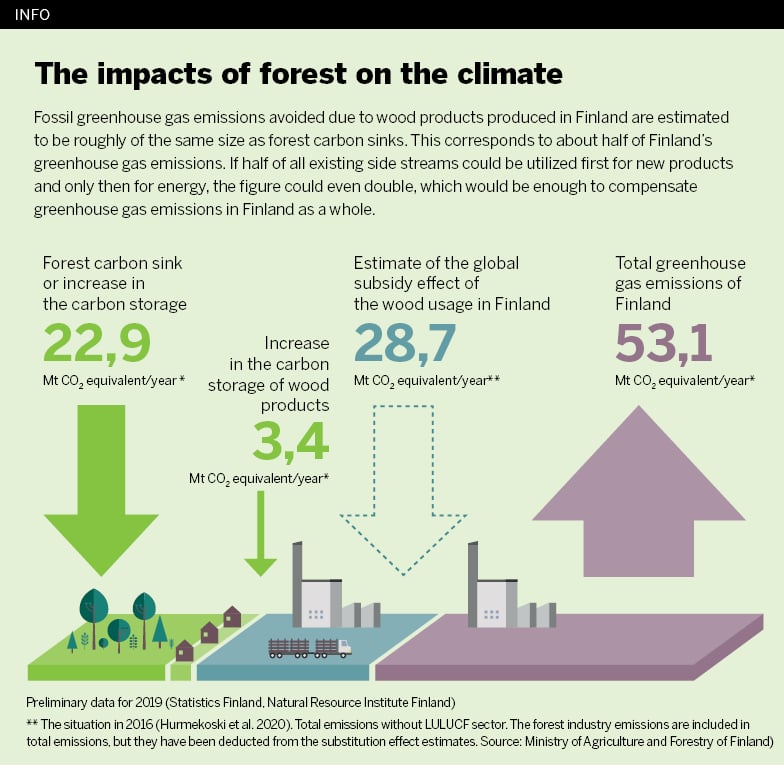Elias Hurmekoski, a postdoctoral researcher at the Department of Forest Sciences of the University of Helsinki, leads a project focusing on substitution processes related to wood products and their climate impact. “Of all the climate impacts related to wood consumption, substitution effects may be the most abstract, since they refer to the fossil emissions avoided through the use of wood. We’ve known about substitution effects for 30 years or more, and there have been many attempts to calculate them. However, major gaps in information remain in the field.”
“In this project, we adopt a multidisciplinary approach, because we’re interested in both the fossil emissions avoided and market operations. We focus on preparing calculations and analysing the underlying assumptions, but the project also provides a more detailed estimate of the size of substitution effects.”
Substitution effects can be increased
“When calculating substitution effects, the essential data concerns the products that wood is expected to displace. There are thousands of potential products and thousands of purposes of use. We also have a host of products with the potential to be substituted by wood. It’s impossible to examine all the combinations, so we need to make a number of rough assumptions.”
Product portfolios can help to significantly increase substitution effects. Wood construction is a good example of this, and from a climate perspective, it is still one of the smartest ways to use wood.
“It can be challenging to calculate the substitution effect if you focus on a single product group. For example, if you examine a stand marked for final felling or a single tree, for example, part of it is log wood, while the rest is treated as pulpwood and other fractions. This makes it essential to analyse the use of side streams. They are currently used for pulp, energy production and chip boards, among other things. However, to maximise the substitution effect of wood, we should increasingly steer these side streams to products and postpone their use as energy until the end of their life-cycle.







